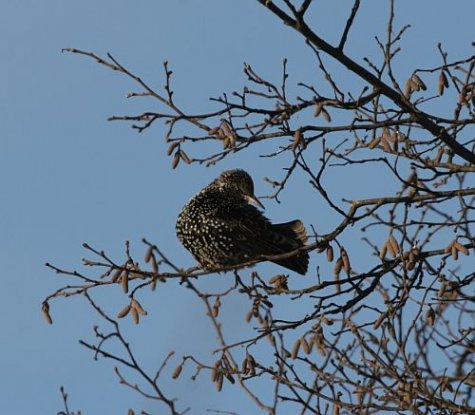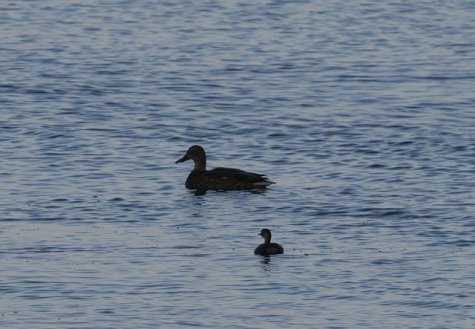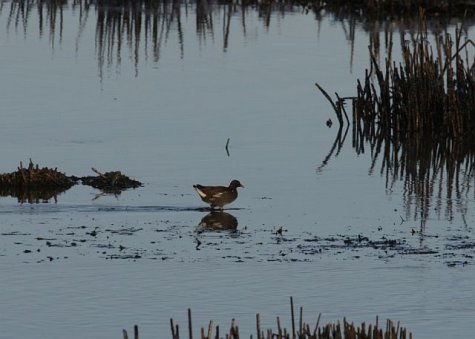Birder’s diary - 28.01
Birder: Margus Ots, linnuvaatleja.ee
Translation: Liis
28. jaanuar
On today’s agenda was to look around a bit at the ”gull hotspots” on the north-western coast, it is just the time to search for winter visitors among gulls. Maybe a glaucous gull or even an Iceland gull would be somewhere there to be seen. I made the first stop at Dirham harbour where there were some tens of gulls but did not notice anyone particularly exciting among them. I felt no particular urge to rove around on the shores in the frosty early morning and drove quickly out to Paldiski. In the south harbour it looked as if emptiness would reign there too, but in the northern harbour about 500 gulls had positioned themselves in the wake of the fishing vessels heading out to sea. I set to study the gulls by telescope and quite soon discovered a clearly bigger and whiter bird among the herring gulls . The bird's primaries were whitish without any darker marks, the faint pale-beige markings on the bird were visible too. All clear, it was a glaucous gull. With this my 103rd species on the 2012 list turned out to be a real rarity that I have seen in Estonia just 3 times.
Far from all starlings fly south for winter (28.01.2012 Karjaküla)
Organised by the Estonian Ornithological Society the winter garden bird watch takes place this weekend. I haven’t hung up lard in any garden and have not counted tits but managed a sort of ”garden bird watch” all the same. At the Karjaküla fox farm near Keila I attempted to peer over the fence and check the gulls there. Plenty of birds were there. The gulls, mostly herring gulls, were at least 2000, evidently even more, but regrettably one cannot survey the area properly from anywhere. In addition there were at least 120 starlings, not all starlings by far fly from us to the south in winter.
The tiny one is not a duckling but a little grebe (Rocca al Mare 28.01.2012)
During the day information arrived from several birdwatchers that there were 2 little grebes in Tallinn at the Rocca al Mare beach and moreover 2 more near the mouth of Mustjõe river. This wonder I wanted to see for myself, and the little grebe became the 104th bird species on my year list. The little grebe is a rather rare nester in Estonia who is not easy to find because of its hidden mode of life. At the Rocca al Mare beach there is a good chance to observe this difficult-to-find bird at quite close quarters. The little grebes are together with mallards here and if a passer-by asks if those tiny birds with the ducks are ducklings then you can confidently assure that it is not quite as crazy as that.
In Rocca al Mare another bird with a secretive way of life winters – 2 moorhens have been present there for several days. To find this creature one must generally muster a lot of patience and silently lie in wait among tussocks and tufts in a mire. At the moment the birds pose quite nicely here.
Moorhen or marsh hen, neither a duck nor hen, instead belonging to the storks (Ciconiidae) (Rocca al Mare 28.01.2012)











